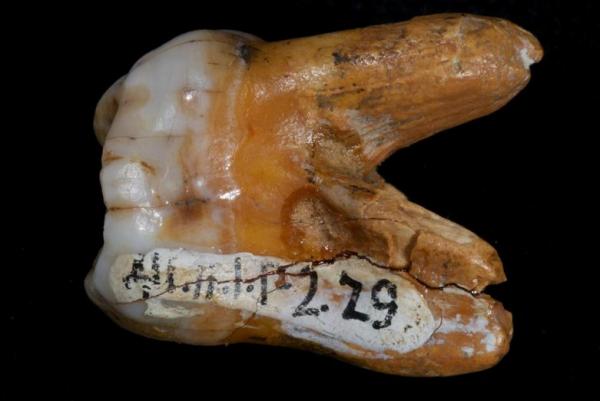
ALTAI KRAI, Russia, Nov. 17 (UPI) — The discovery of two teeth in Siberia’s Denisova cave suggest an ancient relative of modern man boasted a very large set of choppers. The teeth offer new clues as to who the Denisovans were and what they were up to.
The mysterious population was first identified in 2010, after DNA analysis revealed a young female finger bone to be unique from Neanderthals and Homo sapiens. The young girl’s genome also suggested her relatives interbred with modern humans, Neanderthals and another unidentified group of hominids.
The latest discovery reveals the Denisovans to have possessed unusually large teeth and a diverse gene pool, much more diverse than researchers originally predicted.
A single large tooth was found shortly after the finger bone. More recently, it was joined by a second tooth, allowing scientists to say with greater certainty that large molars were part of the Denisovans anatomical makeup.
“In its size, it’s comparable to hominins that lived two or three million years ago…but the age of it shows that it’s very recent,” University of Toronto researcher Bence Viola told CBC.
Researchers were also able to compare the DNA between the three fossils, revealing a gap in time of 60,000 years. Over time, a species’ genome accumulates genetic mutations. The young tooth was found to have considerably more mutations than the older tooth and finger.
The discovery proves the Denisovans managed to stick around for a considerable time. Such longevity suggests the group enjoyed a sizable population and likely spread out geographically, visiting the caves intermittently over thousands of years.
“The world at that time must have been far more complex than previously thought,” Susanna Sawyer, a geneticist at the Max Planck Institute for Evolutionary Anthropology, told National Geographic. “Who knows what other hominids lived and what effects they had on us?”
Despite these genetic revelations, researchers can say very little about what the Denisovans looked like or how they behaved.
But researchers, who described the latest discovery in the journal PNAS, think it’s only a matter if time before a more complete Denisovan skeleton is discovered.
“I’m really convinced,” Viola said. “The genetic data shows that these guys were spread over large parts of Asia, so we must have them.”





